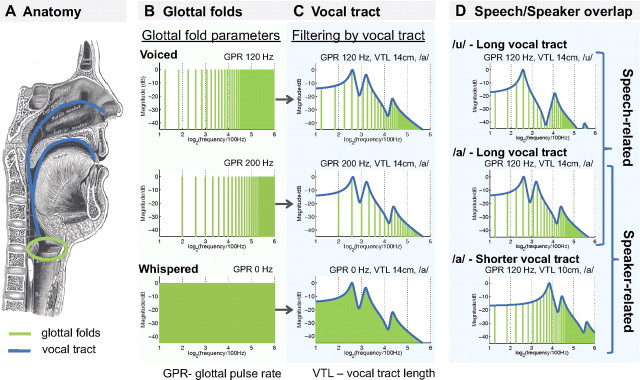Figure 1.
The contribution of glottal fold and vocal tract parameters to the speech output. A, Shown is a sagittal section through a human head and neck. Green circle, Glottal folds; blue lines, extension of the vocal tract from glottal folds to tip of the nose and lips. B, The three plots show three different sounds determined by glottal fold parameters. In voiced speech, the vibration of the glottal folds results in lower voices (120 Hz GPR; top) or higher voices (200 Hz GPR; middle). If glottal folds are constricted, they produce a noise-like sound that is heard as whispered speech (0 Hz GPR; bottom). C, The vocal tract filters the sound wave coming from the glottal folds, which introduces amplitude peaks at certain frequencies (“formants”; blue lines). Note that the different glottal fold parameters do not influence the formant position. D, Both speech- and speaker-related vocal tract parameters influence the position of the formants. Here we show as an example the formant shifts associated with the speech sounds /u/ and /a/ (first and second plot) and an /a/ with a shorter and longer vocal tract length (second and third plot).

